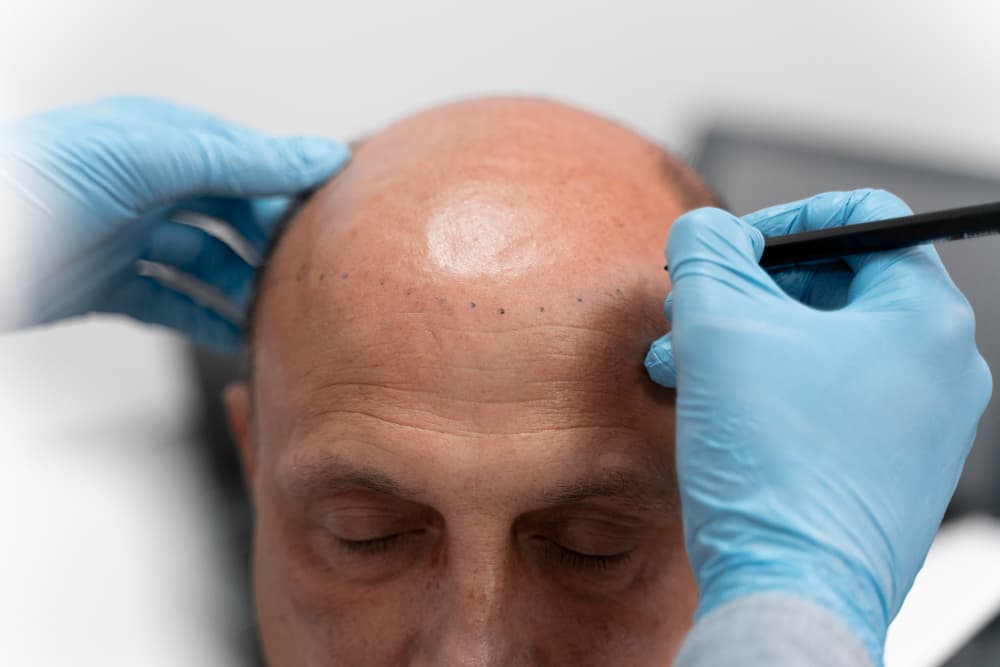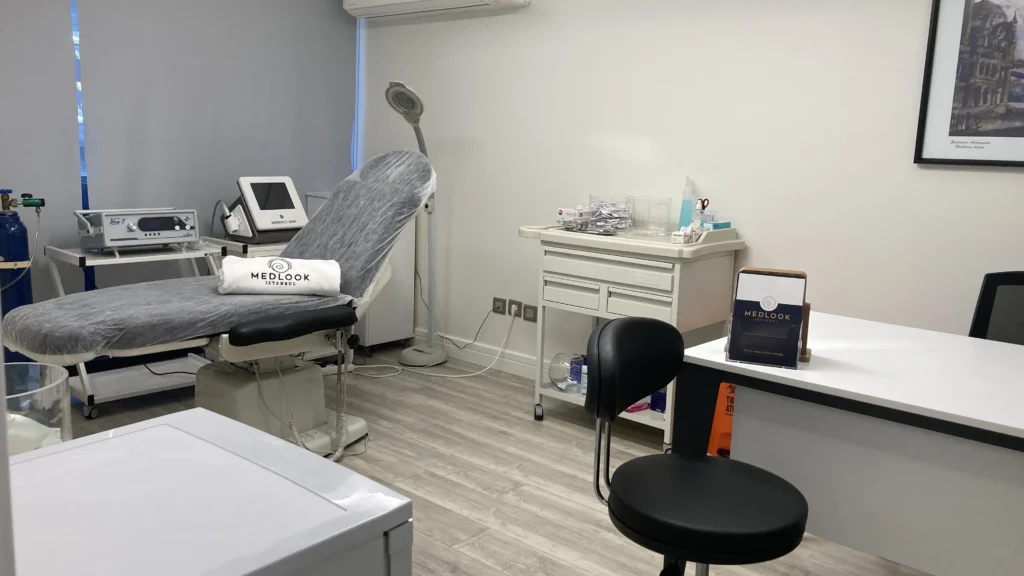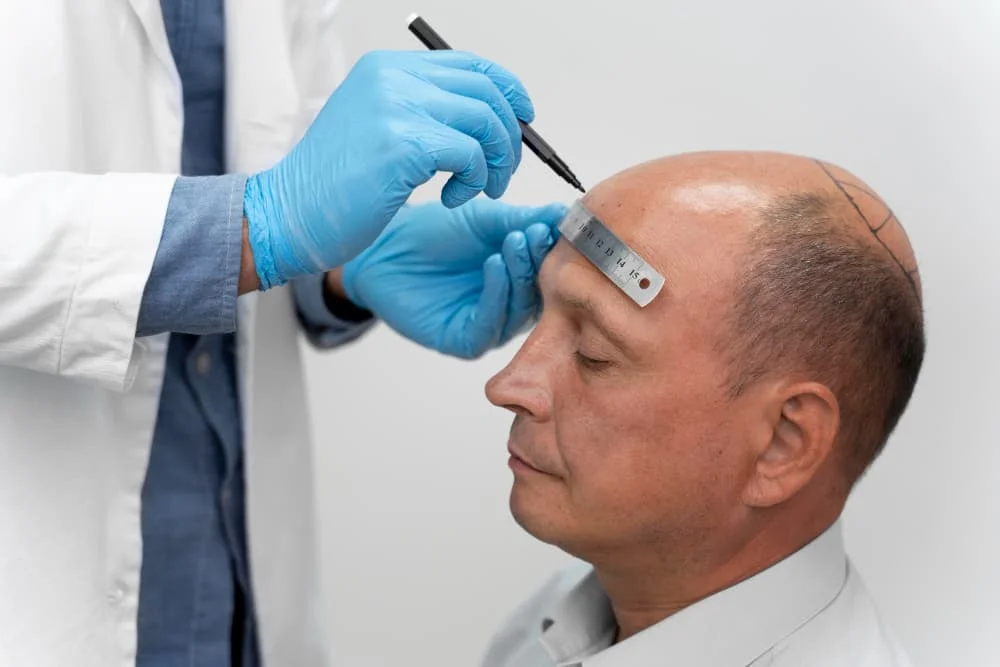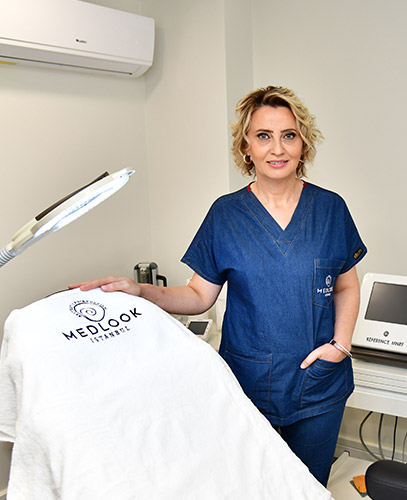
Hair loss can be a significant issue that affects our confidence. Fortunately, modern hair transplant techniques now offer permanent solutions.
However, choosing the right method for you can be challenging. In this blog post, we will compare different hair transplant methods such as FUE, DHI and Sapphire FUE, and discuss the factors that will help you make an informed decision. At Istanbul Hair Institute, we are here to guide you in finding the most suitable solution for your needs.
Understanding Hair Loss
Our hair is an essential part of our appearance, and it’s natural to feel concerned when it starts thinning or falling out. However, before worrying, it’s crucial to understand the causes of hair loss. Hair loss can occur due to various factors, and knowing these can guide us in choosing the right treatment approach.
Types of Hair Loss
Hair loss can manifest in different ways and for various reasons. Here are the most common types:
- Androgenetic Alopecia (Male Pattern Baldness): This is the most common type of hair loss and is typically genetic. It often begins with a receding hairline at the temples and crown, gradually leading to baldness over time.
- Female Pattern Hair Loss: Unlike male pattern baldness, hair loss in women usually presents as a general thinning of the hair. Hormonal changes, genetic predispositions, and certain medical conditions can contribute to this type of hair loss.
- Alopecia Areata: This type of hair loss is caused by the immune system attacking hair follicles, leading to patchy hair loss on the scalp. Stress, genetic factors, and certain autoimmune diseases can be triggers.
- Telogen Effluvium: This temporary type of hair loss occurs when the hair growth cycle is disrupted due to stress, trauma, surgery, childbirth, fever, or certain medications. It results in excessive shedding and overall hair thinning.
- Anagen Effluvium: This type of hair loss happens quickly and extensively, often as a result of cancer treatments like chemotherapy. It occurs when hair follicles move rapidly from the growth phase to the shedding phase.
It’s essential to consult with a doctor to determine the cause of your hair loss. A medical professional can diagnose the type of hair loss you are experiencing and recommend suitable treatment options. Remember, with early diagnosis and the right treatment, it is possible to control or even reverse hair loss.
Detailed Comparison of Hair Transplant Methods
Hair transplantation offers an effective solution to address the aesthetic concerns caused by hair loss. However, there are different methods available, and it is crucial to determine which one is most suitable for you. In this section, we will take a detailed look at the most popular hair transplant techniques: FUE, DHI, and Sapphire FUE.

FUE (Follicular Unit Extraction) is one of the most widely used hair transplant methods today. In this technique, hair follicles are extracted individually from the donor area and transplanted to the balding regions.
Procedure Steps:
- Preparing the Donor Area: The donor area is shaved, and local anesthesia is applied.
- Extraction of Follicular Units: Hair follicles (follicular units) are extracted individually from the donor area using special micro motors.
- Opening Channels: Tiny channels are created in the recipient area using special micro blades or needles to implant the grafts.
- Implanting the Grafts: The extracted hair follicles are carefully placed into the opened channels.
Process and Results:
Since FUE is a minimally invasive procedure, the recovery time is usually quick. The transplanted hair may shed within a few weeks, which is normal. Permanent hair growth typically begins within 3-4 months, and the final result is achieved in 12-18 months.
Who Is It Suitable For?
- Those seeking hair transplantation over larger areas.
- Individuals who prefer a shorter recovery time.
- People who prefer to keep their hair short.

DHI (Direct Hair Implantation) is similar to the FUE technique, but it differs in the implantation phase. In DHI, a special tool called the Choi Implanter Pen is used, allowing the hair follicles to be implanted directly into the scalp.
Procedure Steps:
- Preparing the Donor Area: Similar to FUE, the donor area is shaved, and local anesthesia is administered.
- Extraction of Follicular Units: Hair follicles are extracted individually, just like in the FUE method.
- Implanting with Choi Implanter Pen: The extracted hair follicles are loaded into the Choi Implanter Pen, which is then used to implant them directly into the scalp.
Advantages of DHI Over FUE:
- The process is faster because the channel opening and implantation occur simultaneously.
- It causes less trauma to the scalp, leading to a quicker recovery time.
- Allows for a denser hair transplant.
- It may not require shaving the hair.
Disadvantages:
- It can be more expensive than FUE.
- The procedure may take longer to perform.
- It requires a higher level of expertise.
Who Is It Suitable For?
- Individuals seeking a denser hair transplant.
- Those who prefer not to shave their hair.
- People who want a quicker recovery time.

Sapphire FUE is an advanced version of the FUE method. The main difference from the traditional FUE is the use of sapphire-tipped blades instead of steel ones during the channel opening phase.
Advantages:
- Sapphire blades are sharper and smoother, allowing for smaller channel openings.
- Smaller channels enable denser hair implantation and provide a more natural appearance.
- The sapphire tips have antibacterial properties, reducing the risk of infection.
- The recovery process is faster, and there is less scarring.
Who Is It Suitable For?
- Those looking for a denser hair transplant.
- Individuals who want a more natural look.
- People who wish to speed up the recovery process.
- Those aiming to minimize the risk of infection.
In conclusion, when deciding which hair transplant method is best for you, it is essential to consider factors such as your type of hair loss, hair characteristics, budget, and expectations. Consulting with a hair transplant doctor will help you determine the most suitable option tailored to your needs.
Choosing the Right Method for You
| Feature | FUE | DHI |
|---|---|---|
| Method and Procedure | Individual follicles are extracted directly from the scalp using a small punch tool. It's less invasive and doesn't require a large incision. | Follicles are directly implanted using a special pen (Choi Implanter Pen), which allows extraction and implantation simultaneously. No need to create incisions. |
| Scarring | Leaves small, scattered scars that are easily hidden by hair. | Minimal scarring since follicles are implanted directly without making incisions. |
| Recovery Time | Shorter recovery time, allowing a quicker return to normal activities. | Recovery time is typically shorter or similar to FUE, with minimal swelling and discomfort. |
| Duration and Cost | More time-consuming and typically more expensive due to the detailed extraction process. | Usually more expensive than FUE due to the specialized tools and precision involved but provides better density control. |
| Comfort and Recovery | More comfortable, quicker recovery | Comfortable with a relatively shorter recovery period and precise implantation, providing a natural look. |
Now that we have explored different hair transplant methods such as FUE, DHI and Sapphire FUE, let’s walk through the steps to choose the ideal option for you.
Evaluating Your Hair Loss
The first step in your hair transplant journey is to determine the extent and type of your hair loss. This assessment plays a critical role in identifying which method will be most suitable for you.
- Norwood Scale: This is a commonly used system to classify male pattern baldness. The scale is divided into 7 stages, each illustrating the severity and pattern of hair loss.
The stage of your hair loss helps determine the number of grafts needed, the capacity of the donor area, and which method will be most effective. For example, someone experiencing advanced hair loss may find FUE to be more suitable, while someone with smaller areas of hair loss may prefer DHI.
Considering Your Hair Type
Your hair type, texture, and color also play a significant role in choosing the right method.
- Hair Thickness: Thick hair strands can provide a denser appearance, whereas fine hair may require fewer grafts.
- Hair Color: The color of your hair can influence the selection of the donor area to ensure a natural look for the transplanted hair.
- Hair Texture: Straight, wavy, or curly hair may require different implantation techniques.
- Donor Area: The density and quality of the donor area determine the number of grafts that can be harvested and the method that should be used.
Setting a Realistic Budget
The cost of hair transplantation varies depending on the chosen method, the number of grafts needed, and the experience of the clinic and surgeon. At Istanbul Hair Institute, we offer options tailored to different budgets.
- FUE: Typically more affordable than DHI.
- DHI: Due to the specialized skills and time required, DHI can be more expensive than FUE.
- Sapphire FUE: Slightly more costly than standard FUE due to the use of specialized blades.
At Istanbul Hair Institute, you can get detailed information about the costs and financing options available for hair transplantation. Our consultants are ready to help you create the most suitable payment plan for your needs.
Remember, hair transplantation is a personalized procedure. Evaluating your hair loss, considering your hair type, and setting a realistic budget are crucial steps in making the right decision. At Istanbul Hair Institute, our experts are here to understand your specific needs and expectations and to guide you in selecting the most suitable method for you.
Why Choose Istanbul Hair Institute for Your Hair Transplant?

Choosing to undergo a hair transplant is a significant decision that can transform your life. Therefore, it is crucial to work with a trusted, experienced, and expert team. At Istanbul Hair Institute, we take pride in being a leading clinic in the field of hair transplantation.

At Istanbul Hair Institute, we work with experienced, certified surgeons who specialize in hair transplantation. Our surgeons are experts in the most advanced techniques, including FUE, DHI, and Sapphire FUE, and they create personalized treatment plans tailored to each patient.
Our team stays up-to-date with the latest knowledge and techniques in hair transplantation and is continually developing their skills. Our goal is to provide our patients with the most natural and aesthetically pleasing results.
Advanced Technology and Techniques
Istanbul Hair Institute utilizes the latest technology in hair transplantation.
- Sapphire FUE: We use sapphire-tipped blades to create smaller channels, allowing for denser hair implantation and faster recovery.
- DHI: With the Choi Implanter Pen, we implant hair follicles directly for a more natural and fuller appearance.

Additionally, we prioritize patient safety and health by adhering to the highest standards of sterilization and hygiene protocols.
Patient-Centered Approach
At Istanbul Hair Institute, we recognize that each patient is unique. Therefore, we adopt a personalized approach to ensure the best outcomes.
- Free Consultation: We offer a complimentary consultation with our hair transplant experts to understand your expectations and create the most suitable treatment plan for you.
- Step-by-Step Support: We are with you every step of the way during your hair transplant journey. From pre-operative guidance to post-operative care, we support you, answer your questions, and keep you informed throughout the process.
- Patient Satisfaction: Our top priority is the satisfaction of our patients.
At Istanbul Hair Institute, we offer not just a hair transplant, but a promise of confidence, comfort, and satisfaction. Start your hair transplant journey with us today—contact us now!
Preparing for Your Hair Restoration Journey
There are several important steps to follow before and after your hair transplant procedure to ensure a smooth experience and achieve the best results. Adhering to these instructions can help facilitate a successful operation and recovery.
Pre-Operative Instructions
Before your hair transplant procedure, it is crucial to follow these guidelines:
- Medication: Stop taking blood-thinning medications such as aspirin and ibuprofen, as well as certain vitamin supplements, at least one week before the procedure. Make sure to inform your doctor about all the medications you are taking.
- Alcohol and Smoking: Avoid consuming alcohol and smoking for at least three days before the procedure, as they can affect blood circulation and negatively impact the healing process.
- Caffeine: Refrain from consuming caffeine the day before and on the day of the procedure.
- Hair Care: Wash your hair but avoid using any styling products before the procedure.
- Meals: Have a light breakfast on the morning of the procedure.
- Clothing: Wear comfortable and loose clothing to ensure your comfort during and after the procedure.
Post-Operative Care
To speed up the recovery process and achieve the best results after your hair transplant, carefully follow these post-operative instructions:
- Medications: Take the medications prescribed by your doctor as directed. These medications help minimize the risk of infection and support the healing process.
- Washing: Do not wash your hair for the first few days after the procedure. Begin washing according to your doctor’s recommendations, using special shampoos provided.
- Sleeping: For the first few nights, sleep on your back with your head slightly elevated to reduce swelling in the transplant area.
- Activity: Avoid strenuous physical activities and exercise for the first few days following the procedure.
- Sun Exposure: Protect the transplant area from direct sunlight by wearing a hat or bandana.
- Itching: You may experience itching in the transplant area. However, avoid scratching to prevent damage.
- Alcohol and Smoking: Refrain from consuming alcohol and smoking during the recovery period.
- Nutrition: Support the healing process by maintaining a healthy and balanced diet.
- Hair Shedding: The transplanted hair may shed within a few weeks, which is a normal part of the process. Permanent hair growth typically begins within 3-4 months, with the final results visible in 12-18 months.
If you experience any issues or have questions during the recovery process, do not hesitate to contact the Istanbul Hair Institute team for support.
Recent Posts
-
 Effective Solutions for Seasonal Hair Loss: What Treatments to Consider04 Feb 2025
Effective Solutions for Seasonal Hair Loss: What Treatments to Consider04 Feb 2025 -
 Does the Density of Hair Transplants Matter? Achieving a Full Look04 Feb 2025
Does the Density of Hair Transplants Matter? Achieving a Full Look04 Feb 2025 -
 Look Younger: Mini Facelift and Neck Rejuvenation02 Feb 2025
Look Younger: Mini Facelift and Neck Rejuvenation02 Feb 2025 -
 Can Ozone Therapy Really Boost Your Mood and Energy Levels?02 Feb 2025
Can Ozone Therapy Really Boost Your Mood and Energy Levels?02 Feb 2025 -
 Say Goodbye to Static: How to Get Rid of Static in Hair29 Jan 2025
Say Goodbye to Static: How to Get Rid of Static in Hair29 Jan 2025

